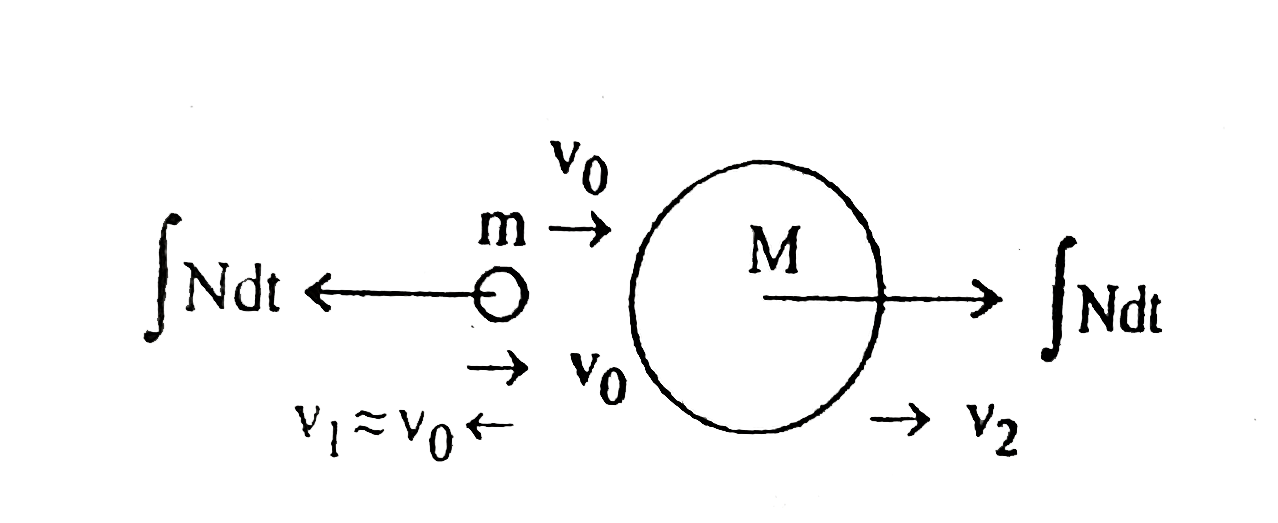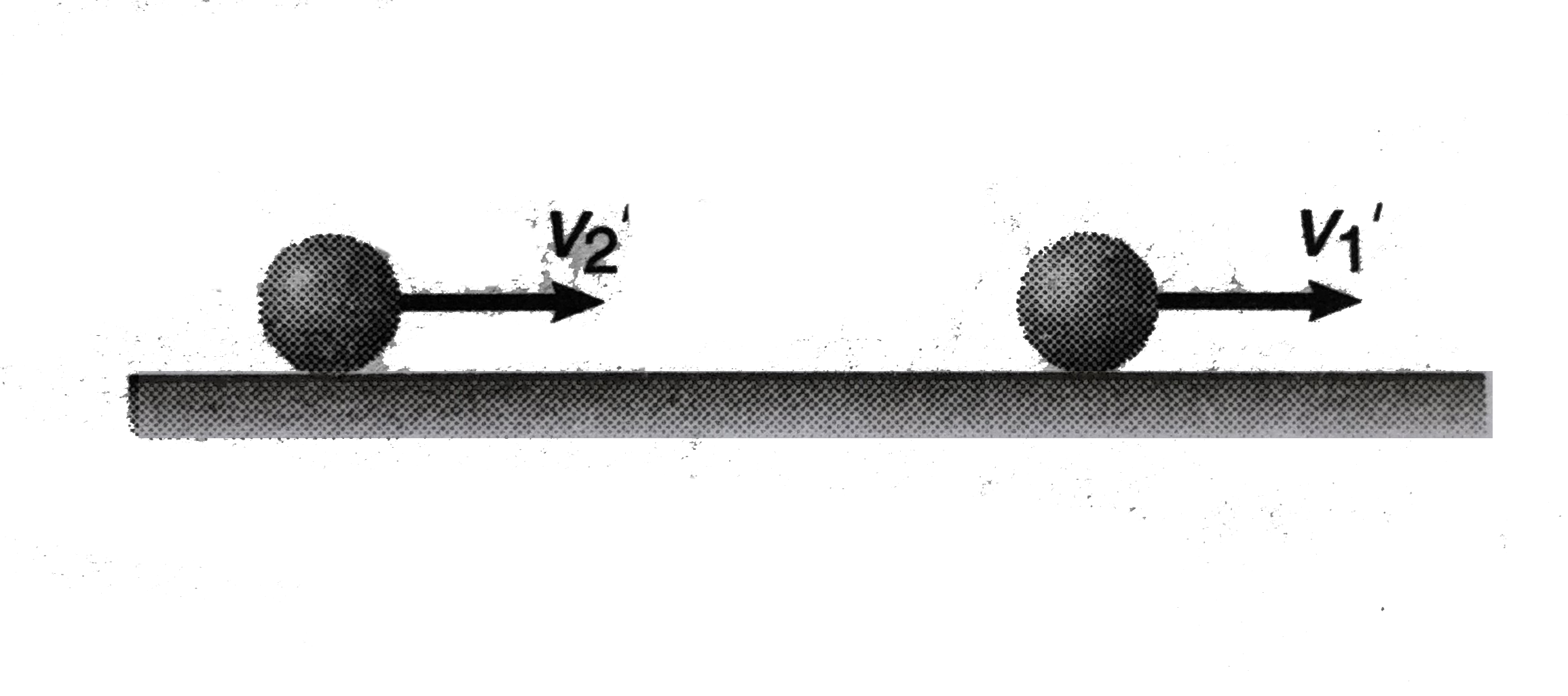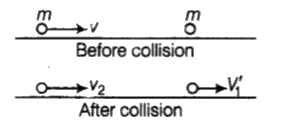Suppose a golf ball is hurled at a heavy bowling ball initially at rest and bounces elastically from the bowling ball after the collision
the golf ball has the greater momentium and the greater kinetic energy
the bowling ball has the greater momentium and the greater kinetic energy
the golf ball has the greater momentium but has the smaller kinetic energy
the bowling ball has the greater momentium but has the smaller kinetic energy
The correct Answer is:D

Pif=mv1≈mv0
∫Ndt=|Δ→p|issamefor⊥h≈2mv0
p2f=mv2≈2mv0
⇒P2f≥p1f
⇒k1k2=p2ifp22fm2m1=(mv0)2.M(2mv0)2m=M4m
k1≥k2
Topper's Solved these Questions
- BOOK - BANSALCHAPTER - MASTER PRACTICE PROBLEMEXERCISE - Comphrehension134videos
MASTER PRACTICE PROBLEM
- BOOK - BANSALCHAPTER - MASTER PRACTICE PROBLEMEXERCISE - Reasoning75videos
MASTER PRACTICE PROBLEM
- BOOK - BANSALCHAPTER - FLUID MECHANICSEXERCISE - PYQS AIEEE10videos
FLUID MECHANICS
- BOOK - BANSALCHAPTER - SEMICONDUCTORSEXERCISE - CBSE Question32videos
SEMICONDUCTORS
Similar Questions
A ball of mass m moving at a speed v makes a head on inelastic collision with an identical ball at rest. The kinetic energy of the balls after the collision is 34th of the original. Find the coefficient of restitution.

 View Solution
View SolutionOn a frictionless surface, a ball of mass m moving at a speed v makes a head on collision with an identical ball at rest. The kinetic energy of the balls after the collision is 3/4th of the original. Find the coefficient of restitution.
View Solution
Knowledge Check
- Question 1 - Select One
Choose the most appropriate option.
A ball of mass m moving at a speed v makes a head on collision with an identical ball at rest. The kinetic energy at the balls after the collision is 3/4th of the original. What is the coefficient of restitution?
 A1/√3B1/√2C√2D√3
A1/√3B1/√2C√2D√3 - Question 2 - Select One
A 2.5-kg ball and a 5.0-kg ball have an elastic collision. Before the collision, the 2.5-kg ball was at rest and the other ball had a speed of 3.5 m/s. What is the kinetic energy of the 2.5-kg ball after the collision?
A1.7 JB3.4 JC8.1 JD27 J - Question 3 - Select One
A ball moving with a velocity of 6 m/s strikes an identical stationary ball. After collision each ball moves at angle of 30∘ with the original line of motion. Assuming that the collision is elastic, what are the speeds of the balls after the collision?
A√32m/s,2√3m/sB3m/s,2√3m/sC2√3m/s,2√3m/sD√3ms,√3m/s
A ball of mass m moving at speed v makes a head on collision with an identical ball at rest. The kinetic energy of the balls after the collision is 3/4th of the original. Find the coefficient of restitution.
View SolutionA ball with initial speed of10m/s collides elastically with two other identical balls at rest as shown in figure, whose centres are on a line perpendicular to the initial velocity and which are initially in contact with each other.All the three balls are lying on a smooth horizontal table. The first ball is aimed directly at the contact point of the other two balls.All the balls are smooth. Find the velocities of the three balls after the collision.
 View Solution
View SolutionA ball of mass m moving with velocity u strikes another identical ball at rest. Find the velocities of the balls after the collision if the coefficient of restitution is e and the collision is head -on. Also , calculate the loss in K.E.
View SolutionThe figure below shows three identical balls A , B and C. Initially , the baiis B and C are at rest and the ball A while moving with a veiocity v, collides with ball B. if the collision is perfectiy elastic , then after the collision
 View Solution
View SolutionA super dense ball of very large mass is moving with a certain velocity in a particular direction . This heavy ball collides with a very light ball elastically . Calculate the approximate ratio of velocity of light object after collision to that with velocity of heavy ball .
View Solution

